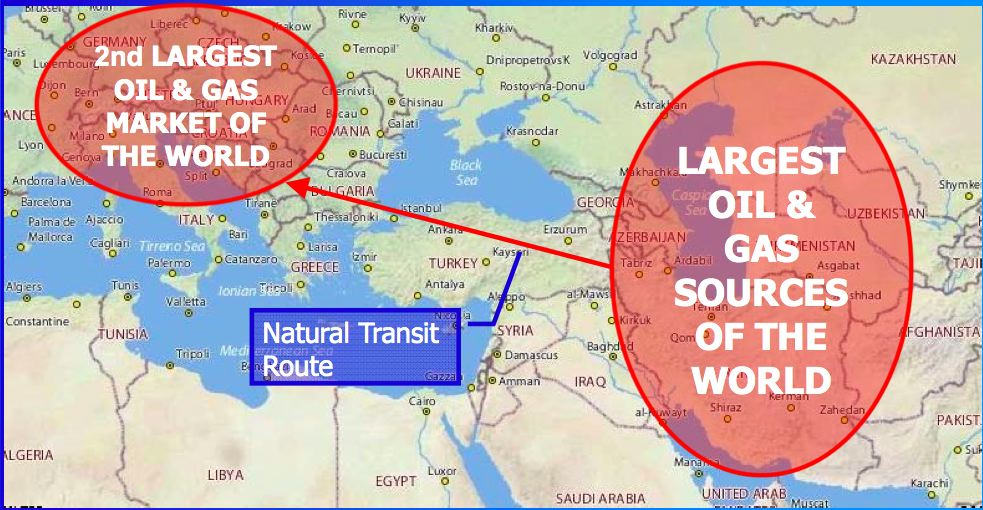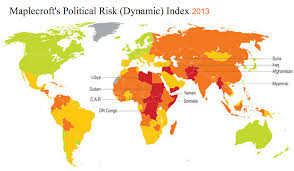Being the most important resources that drive the economy of the states across Eurasian region, oil and natural gases have significantly contributed to the growth, and civilization of various countries in Asia and Europe. Oil and natural gases are not only the sources of energy, but also the driving force of the economy as they are among the highest contributors of GDPs in these countries. The fact that most nations in the Eurasian region are independent and sovereign states makes it difficult to mobilize the oils and natural gases, which are the major resources of these states.
Given that they are the major sources of development, they have become the objects of international politics, attracting some of the top economies in the world, such as Russia and the United States. The Eurasian region has a population of around 5 billion people, which is over 70% of the world’s total population. As such, the energy sector has generated millions of job opportunities so as to sustain the population. In other words, the oil and natural gas industry is an investment that holds the economy of the various states in Eurasia, and, therefore, the energy sector holds the power of the survival of these nations.
As seen in the past, oil has been a leading cause of conflicts among the Eurasian states and the outside countries that own oil mines in these regions. September 11 is an example of a tragic event that was caused by oil disputes. The conflict between Iraq and the United States rose as a result of oil control fueled by the United State’s declaration to advocate force in securing their oil. Al-Qaeda’s plan to bomb America and a couple of America’s embassies across the world was a strategy to curb America from deploying more forces in their oil reserves. The issue of transportation is also critical. The idea of transporting Central Asian oil by passing their pipeline in Afghanistan in order to make the distribution easier and cheaper impacted the 9/11 event.
Basically, oil production and its distribution have been the cause of war over the years as most nations disagree on various issues related to these natural resources (Oliker, 2002). The conflicts associated with oil and natural gases have been stereotyped; some people say that oil is cursed, being the cause of conflicts among the nations involved in production and transportation.
Soviet disintegration had a major impact on the oil energy sector. Apart from losing over 90% of the 10 million barrels that were produced every day, the Central Asian States also suffered the lack of modern technology and shortage of production equipments. This worked in favor of Russia and Azerbaijan as they secured the dominant positions in oil and gas reserves. Nevertheless, despite the disintegration of the Soviet Union, the five Central Asian States have maintained their inter-state political relations because of their dependence on each other’s resources as some parts hold hydrocarbon resources, while others have rivers, and, therefore meet the domestic needs of other states.
This reliance has strengthened their inter-states political relations as they acknowledge the roles played by the states involved. However, there have been occasional disputes among these nations caused by discontinued supply of oil and water. However, the intervention of presidents from these states has ensured that there is an understanding from all sides. As a way to deal with the conflicts in the Eurasian region, most of Asian and European countries are usually invited in an annual meeting that was formed in 1996, known as the Asia-Europe Meeting (ASEM).
Most wars usually occur as a result of disputes in regards to control of oil mines, and the concern of availing the oil at very high prices. Over the past decade, the issue of the legal status of the Caspian Sea has been seen to raise tension among Azerbaijan, Kazakhstan, Iran, Turkmenistan and Russia (Hiro, 2009). This subject has remained a complex matter as the countries involved have not been able to come to an agreement. Nonetheless, they have signed agreements so as to contain the occasional conflicts caused by the division of the Caspian Sea. The issue of security and boundaries is also a sensitive subject in the political scene as the states involved have always been fighting for the ownership of oil and natural gases fields. The disputes among the inter-states of the Eurasian region are usually considered as ethnic conflicts, however, the intervention of the outside nation increases tensions, leading to massive loss of lives and property. The scramble for the power of influence over oil/gas fields has resulted in armed intervention, transforming inter-states’ unrests to wars (Laruelle, 2008).
The distribution of oil and natural gas all over the world has seen nations forming political and social ties. As a result, this has opened new ways for globalization, industrialization, and economic growth of countries not only in the Eurasian region but all over the world. The oil/gas industry has been known to have a major influence on the public sector. Politics requires a lot of money so with the support of the individuals in this billion-dollar industry, politicians are guaranteed the resources they need. Nonetheless, they are expected to act in favor of these individuals once they are elected.
Even though the constant war in Afghanistan has discouraged other forms of investments, the country still gains a lot of foreign income from its natural wealth. However, the deployment of foreign armed forces from countries involved in the production and distribution has started the war, opening up opportunities for other forms of investments that contribute to the growth of the nation. Additionally, the intervention of the international community has helped to reduce inter-states conflicts and tensions among countries, seeking to gain the power of influence over the production and distribution of this mineral resource.
The economic gains due to oil and natural gases have significantly enhanced the development of infrastructure in Afghanistan. Apart from the foreign income obtained from selling these resources, these states have attracted investments which have created jobs that enhance growth and development. The involvement of political leaders in the energy-sector has been the cause of conflicts as tensions are developed by efforts made by the states involved to control oil/gas production and distribution. Over the years, it is evident that oil and natural gases have brought energy security, economic prosperity, and stability in this region (Rashid, 2008). However, this has also been followed by constant conflicts that are subject to the issue of power in production and transportation. In addition to this, the demand for these resources in the energy market has consistently increased as a result of industrialization, and the various economic tasks that contribute to the modernization of the world.
References
Hiro, D. (2009). Inside Central Asia. New York: Overlook Duckworth.
Laruelle, M. (2008). Russian Eurasianism: An ideology of empire. Washington, D.C: Woodrow Wilson Center Press.
Oliker, O. (2002). Faultlines of conflict in Central Asia and the south Caucasus: Implications for the U.S. Army. Santa Monica, CA: RAND.
Rashid, A. (2008). Descent into chaos: The United States and the failure of nation building in Pakistan, Afghanistan, and Central Asia. New York: Viking.
Indices


